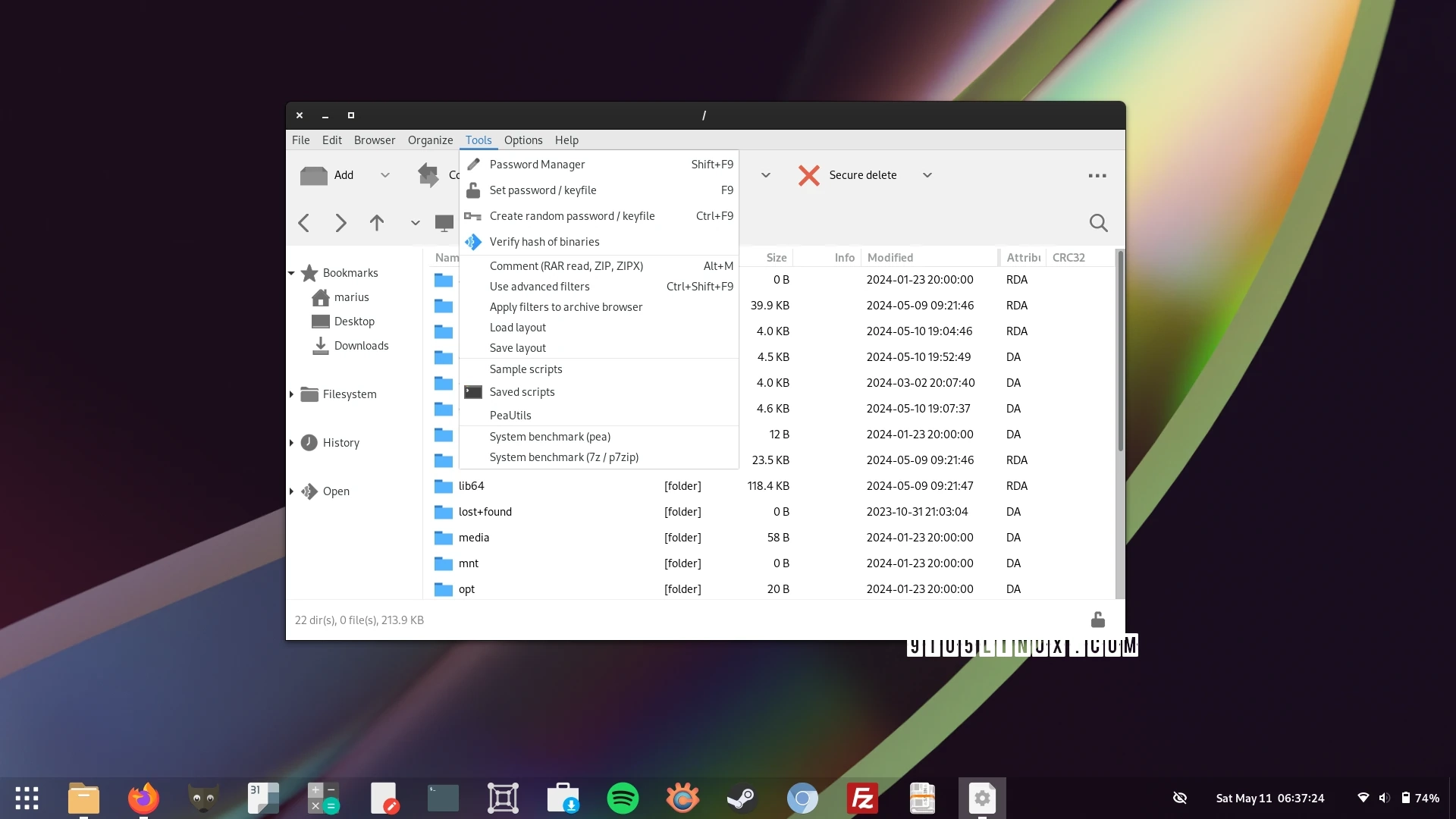Coming three months after the PeaZip 9.7 release, PeaZip 9.8 has been released today as a major update to this open-source, free, and cross-platform file archiver utility that adds various UI and CLI enhancements, new themes, and bug fixes.
Highlights of PeaZip 9.8 include new Mac and Tux themes, a new “Always browse archives in flat view” option switch in Main Menu > Browse and the Navigation context menu item, a new “Comment, and Info functions” option in the status bar context menu, and an improved “Extract to” context menu for direct extraction of archives.
The devs explain in the release notes that it’s now possible to directly extract all archives or only selected items using the “Extract to” context menu without further confirmation to any output path in bookmarks, history, or breadcrumb. Additionally, the “Extract here” links can now extract all archives or only the selected items.
“Selection and navigation submenus in extraction and archiving screens are now organized in the same way of extract here submenu: bookmarks are shown first, history, session history, and breadcrumb are shown in History submenu,” said the devs.
Several new command line switches have been added in PeaZip 9.8, which can be used both in scripts and for system integration. These include -ext2neutral, for directly extracting archives in the current path applying the “new folder” policy as defined in the PeaZip app, -ext2downloads, -ext2desktop, and -ext2documents for directly extracting archives in the Downloads, Desktop, or Documents paths, as well as -ext2bookmark(1..8) for extracting archives in the path of the bookmarked item numbers 1 to 8.
On top of that, this release fixes directory name sorting that was wrongly displayed in the treeview and breadcrumb dropdown menus for some widget sets, as well as a couple of issues affecting Windows users. Under the hood, PeaZip 9.8 uses Pea 1.18 as the default backend and it’s compiled with Lazarus 3.2, while the sources are still compatible with the Lazarus 2.x series.
PeaZip 9.8 is now available for download from the official website as ready-to-use binaries written in GTK2 or Qt 5 for 64-bit (x86_64) and AArch64 (ARM64) architectures. Of course, you can also install it as a Flatpak app from Flathub or your distro’s software repositories.
Last updated 13 hours ago
